Atari 2600
Top 10 Best Atari 2600 Games of All Time!
Atari caught lightning in a bottle when Pong hit arcades in 1972, and the Atari brand was synonymous with video games for the next decade. Atari released the 2600 (then known as the Atari Video Computer System) in October 1977 and its popularity continued to grow over the course of the next several years. The console reached lifetime sales in excess of 30 million, and the system was home to over 500 games. The Atari 2600 was easily the most successful console of its era, but poor quality control and limited media coverage created an environment that made it difficult for consumers to avoid bad games. The house that Atari built crumbled to the ground by 1984 and the entire industry was brought to its knees. Nevertheless, the Atari 2600’s impact on the industry cannot be overstated.
10
Megamania
1982

Megamania looks like a standard space shooter (and bears a particularly strong resemblance to Sega’s Astro Blaster), but the game puts a few twists on the genre. Incidentally, the game is supposed to represent an astronaut’s nightmare. This premise gave the designers license to be surreal. Instead of shooting down alien spacecraft or giant insects, players are faced with an assortment of random items like hamburgers, refrigerator magnets, and bow ties. This lighthearted premise notwithstanding, Megamania is a surprisingly intense game. In most shooters from the era, enemies would typically fly back and forth from one side of the screen to the other. The enemies in Megamania are a little harder to predict. They move both horizontally and vertically, and frequently change their direction without warning. There are also new patterns to learn with each wave of enemies and the game gets increasingly difficult in the later stages. In order to succeed, players will have to avoid enemy fire, adjust to ever-changing attack patterns, and be mindful of their energy gauge which steadily decreases during the game and acts as a time limit. Megamania pokes fun at the genre in some regards, but the lightning-fast gameplay earns it a place in the upper-echelon of Atari 2600 shooters.
9
Stargate
1984
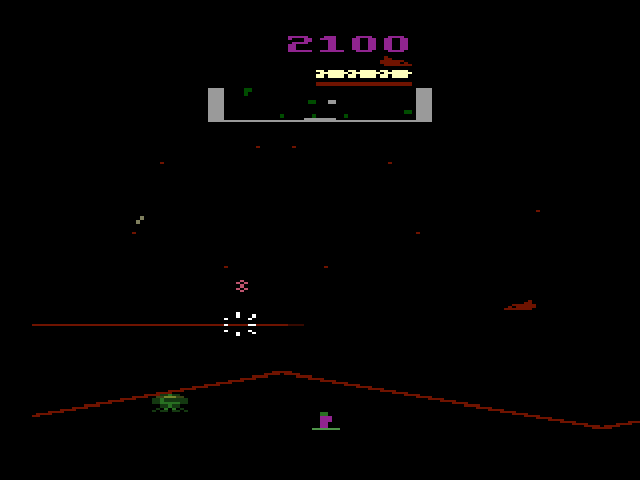
Defender was one of the most progressive arcade shooters of the early ’80s. The side-scrolling screen gave players more freedom than typical single-screen shooters did, and the ability for players to change their direction and adjust their altitude felt pretty liberating. The gimmick of protecting humans from alien abduction gave the game an added sense of depth and helped separate it from some of the more mindless shooters that dominated the arcade scene. Sadly, the Atari 2600 version of Defender was a complete mess that was marred by sprite flicker, unreliable collision detection, and poor controls. Thankfully, Stargate (aka Defender II) rectifies all of these issues. The graphics are sharper, the scrolling is noticeably smoother, and the game is no longer hampered by flickering sprites. Perhaps the most important improvement was in the gameplay department. The arcade versions of Defender and its sequel were well-known for complex control schemes that utilized a five-button setup. Concessions were made in the Atari version of Defender due to the limited buttons available on the 2600 controller, but an inventive approach was taken for the sequel. The Atari version of Stargate actually uses a second joystick to accurately replicate the control scheme of the arcade original. (The first joystick is used for basic movement and shooting, while the second joystick is used to drop smart bombs, activate shields, and jump into hyperspace.) It’s blatantly obvious that the programmers took a lot more care with Stargate than they did with its predecessor.
8
Keystone Kapers
1983
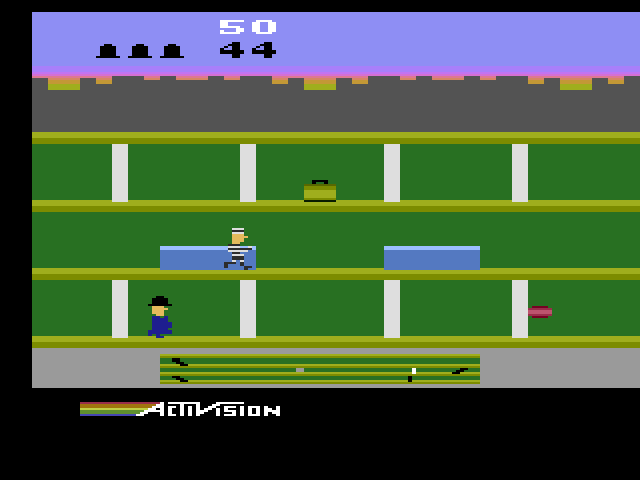
In Keystone Kapers, players assume the role of a police officer tasked with catching a no-good hooligan in a department store. The department store in question is three stories tall and spans several screens, so players have to make use of elevators and escalators to get around the mall. There is a certain amount of strategy involved in this. Elevators can provide a more-direct route to where the players want to go, but you often have to wait for them. Escalators, in contrast, are more reliable but are usually a little more out of the way. The hooligan’s movements are erratic and very difficult to predict, so paying attention to the on-screen map is essential. Complicating matters further are a number of obstacles (such as shopping carts, bouncing balls, and toy airplanes) that players must jump over or duck under. As with most games from the era, Keystone Kapers gets progressively faster in the later stages, so catching the hooligan within the allotted time limit becomes increasingly more difficult. Keystone Kapers was based of a classic series of silent films from the 1910s, and the game is one of the many forgotten classics from the early days of video games.
7
Phoenix
1983
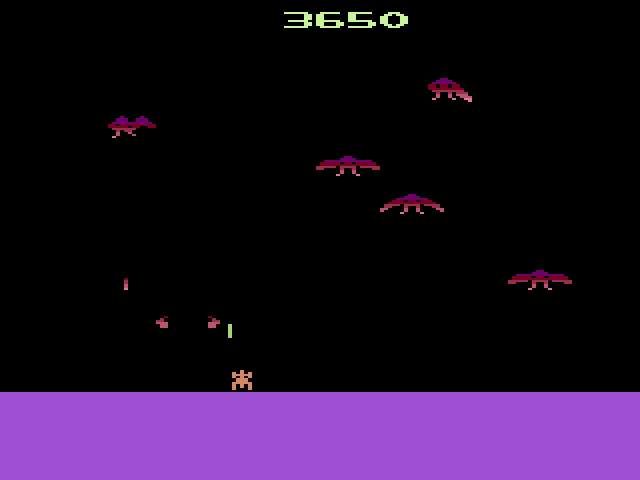
Phoenix is a fairly typical space shooter in the style of Space Invaders. In the game, players move a ship along the bottom of the screen and attempt to shoot down a number of alien birds. These birds are larger and more colorful than most enemies from typical space shooters from the era, and their patterns are also more complex. The birds will swoop back and forth as they attempt to zap the player, and will periodically dive down with kamikaze attacks. In later rounds, the birds will often take several shots to put down and will be able to regenerate their wings if they are shot off. Players will also have to worry about destroying falling eggs before they hatch additional birds. Phoenix was noteworthy for featuring one of the first true boss battles in video game history. The fifth stage of the game pits players against a large alien mothership that slowly descends to the planet’s surface. To complete this stage, players must successfully destroy the hull of the ship before shooting the alien pilot inside. Phoenix had more variety than most shooters from the era, and the Atari 2600 version was one of the most faithful arcade ports of its generation.
6
Pitfall II: Lost Caverns
1984
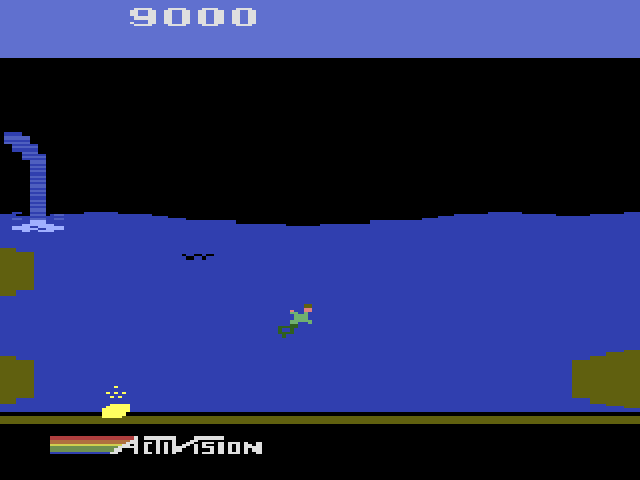
The first Pitfall! was basically synonymous with the Atari 2600 and was a monumental step forward for the platforming and adventure genres. As progressive as the game was, the sequel is even more advanced. The basic premise in Pitfall II is similar to the original, and the game still centers around an ambitious cave explorer on a quest to collect treasure in a jungle environment. In the original Pitfall!, players had a limited number of lives and would have to start back from the beginning when they died. Pitfall II discards the concept of “lives” and implements an innovative checkpoint system. When players fall victim to a trap or are attacked by an enemy, they simply return to the last checkpoint they passed. This system ultimately allows for a much longer adventure. In fact, Pitfall II is nearly twice the size of the original! I’d be lying if I said I didn’t miss the vine-swinging action, but the newly added swimming ability and the option to use balloons to fly through the air were greatly appreciated. From a visual standpoint, Pitfall II stands head and shoulders above nearly every other Atari 2600 game. It features smooth scrolling, detailed animation, and impressive environmental effects. (The rolling waves are especially noteworthy.) Unlike the original, Pitfall II actually features a soundtrack! Pitfall II quite literally pushed the Atari 2600 beyond its limits, and would not have been possible if not for the custom hardware that was built inside the game cartridge. The game made used of a “Display Processor Chip” to enhance the graphical and audio capabilities of the system. The chip was designed to help extend the life of the aging Atari 2600, but the video game crash of 1983 put the kibosh on that idea and cemented Pitfall II‘s position as the most technically-impressive game on the console.
5
Frogger
1982
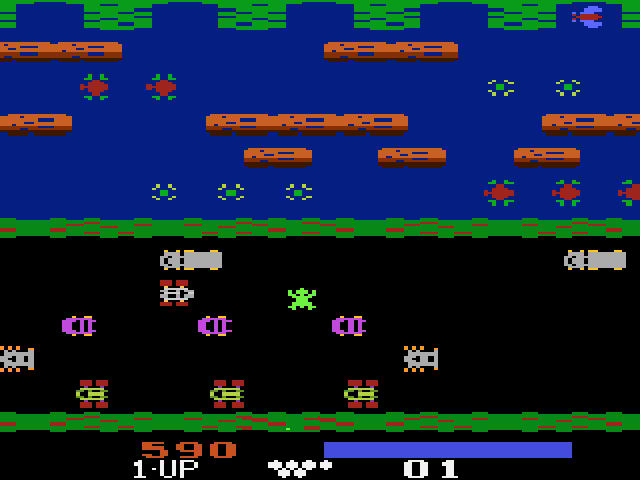
Frogger ranks right up there with Pac-Man and Donkey Kong as far as classic character-driven arcade games go. The game has a simple premise that revolves around frogs risking their lives to get to their homes. The frogs will have to cross busy highways, hop on logs and on the backs of turtles, and avoid snakes and crocodiles. For reasons I don’t fully understand, the frogs also have to avoid falling into the water. The concept and control schemes are intentionally simple, but the game requires fast reflexes and players have to react very quickly as the game progresses. There were actually two different versions of Frogger released on the Atari 2600. The first (released by Parker Brothers in 1982) featured a new mode that allowed players to drift off one side of the screen and appear on the other side. Starpath’s version was much closer to the arcade original, however, and featured better graphics and more music. The Starpath port is being recognized on this countdown, but you can’t really go wrong with either version.
4
Spider Fighter
1983
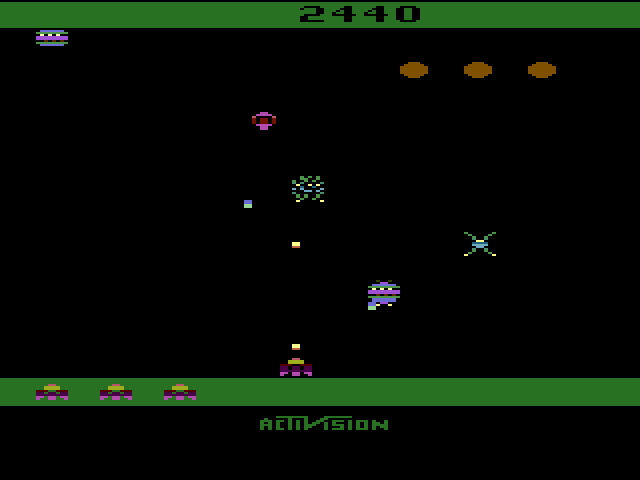
If you haven’t already noticed by now, Space Invaders-inspired shooters were a pretty big deal on the Atari 2600. To describe Spider Fighter as the best shooter on the console is saying something. The object of the game is to protect various fruit crops from endless swarms of flying arachnids, and the gameplay basically consists of moving back and forth along the bottom of the screen while shooting the aforementioned spiders. These spiders come in various shapes and sizes and their patterns can be very hard to predict. If players fail to destroy them in a timely fashion, the spiders will increase in speed. Spider Fighter is notable for its fast action, so incredible reflexes are required in the later stages of the game. Spider Fighter lacks the uniformity offered by more traditional shooters and it’s not exactly the easiest game to jump into. That being said, once you get past the learning curve, you’ll find the most addictive shooter on the console.
3
Ms. Pac-Man
1983
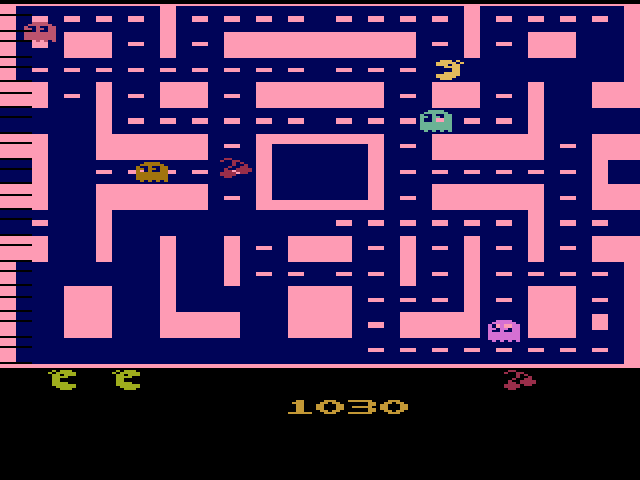
The Atari 2600 version of Pac-Man was a disappointment in every sense of the word and is widely regarded as one of the worst arcade ports of all time. Ms. Pac-Man, on the other hand, was surprisingly faithful to the arcade. If you are somehow unfamiliar with the game, the point of Ms. Pac-Man is to navigate through a maze while eating dots and avoiding ghosts. Players can eventually turn the tables on their ghostly foes by eating “energizers” that are located in each stage. Players can also increase their score by eating bonus items that occasionally show up. Even though you could literally describe the game in a matter of seconds, Ms. Pac-Man provides countless hours of entertainment. The Atari 2600 version doesn’t look as sharp as its arcade counterpart and it’s a little on the easy side, but the controls are highly responsive and most of the basic gameplay survived the porting process. It’s easily one of the most replayable games on the system, and it almost makes up for Atari’s lackluster port of the original Pac-Man.
2
Warlords
1981
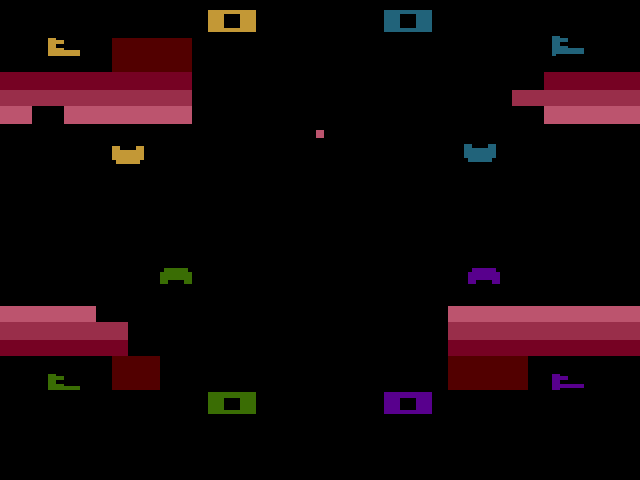
Warlords could almost be described as the bastard child of Quadrapong and Breakout. It was one of the first great games for more than two players. The Atari 2600 version lacks some of the graphical detail of the arcade original, but it retains the multiplayer options. Using the paddle controllers, each of the four players controls a small shield in an attempt to protect their fort from a ricocheting fireball. Players have the option of either catching or deflecting the ball with their shields. The ultimate goal is to break through their competitors’ castles and eventually hit the knights that are inside. It’s a simple concept, but it’s endlessly replayable with the right group of people. Naturally, players also have the option of competing against the computer. The AI is pretty primitive by today’s standards, but each computer-controlled opponent has their own style. Really, though, the game is most fun when played with human opponents and helped define what real multiplayer gaming was all about.
1
Kaboom!
1981
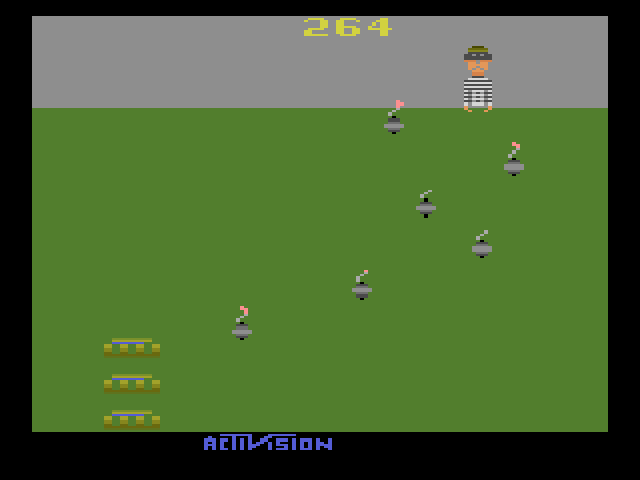
Kaboom! is a shameless knock-off of a 1978 arcade game called Avalanche. Atari expressed little interest in porting their game to home consoles, however, so Activision slapped a coat of paint on it and released the best game to ever grace the Atari 2600. The premise of Kaboom! involves a “mad bomber” with a relentless desire to drop bombs from the top of a building. It’s the player’s job to catch these bombs before they hit the ground. That’s pretty much the entire game. The player is limited to moving left or right, but the erratic movement of the bomber and the ridiculous speeds that the game reaches make it uniquely challenging. A lot of games require the player’s undivided attention, but Kaboom! takes things even further. The game moves so fast that it’s virtually impossible to succeed unless you rely solely on instincts and reflexes. If you become distracted, you will lose. If you put too much thought into what you are doing, you will lose. The key to success is to achieve zen-like levels of concentration to the point where your subconscious takes over for you. One of the reasons Kaboom! worked as well as it did was due to the Atari 2600’s paddle controller. The game was ported to the Atari 5200 in 1984 and was made available on Microsoft’s Game Room service in 2010, but the game simply can’t be properly experienced with a standard controller.

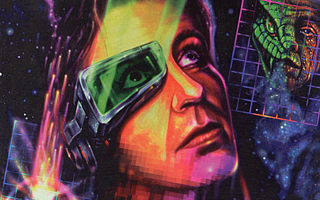
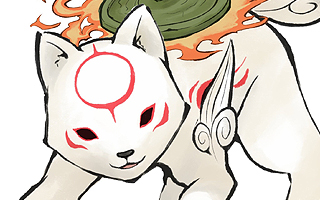
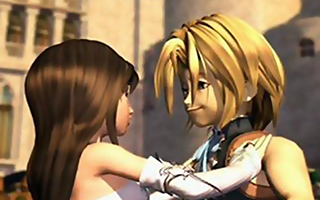
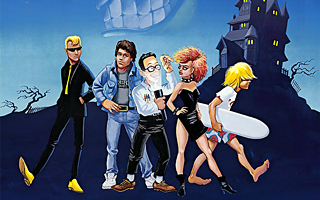
Do you agree with this list? Let us know what you think by leaving a comment below. Your opinion matters!